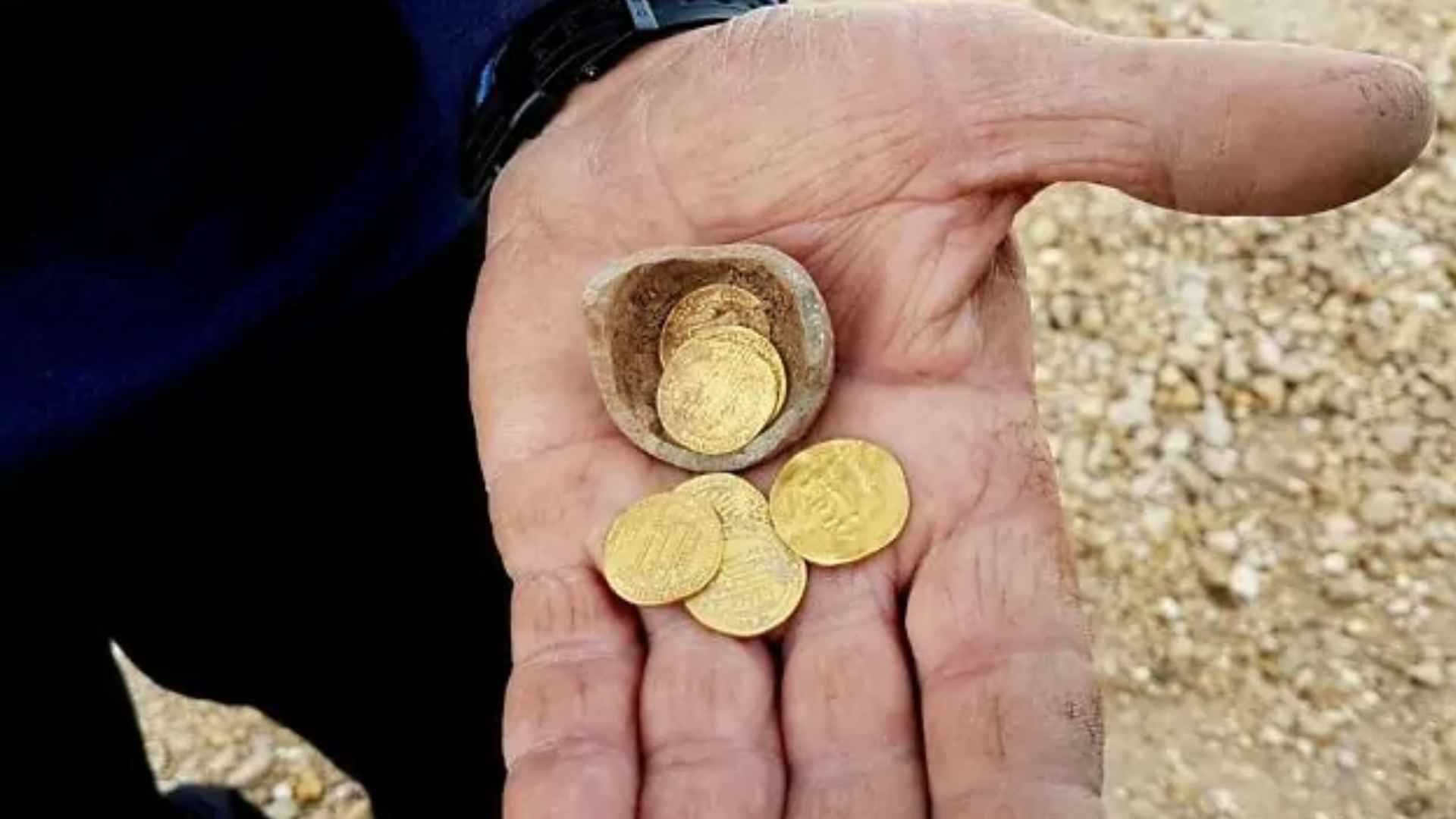Two hikers in the Czech Republic stumbled upon an unexpected treasure worth over $360,000.
They made the remarkable find in the Giant Mountains, an area in the northeast of the country. During a casual hike, they spotted an aluminum box sticking out of the path. Inside, they discovered 598 gold coins carefully arranged in eleven piles and wrapped in a black cloth. To their surprise, a second box contained several items believed to date back to World War II, including cigarette packets, gold bracelets, and personal belongings.
How these nearly 600 gold coins from World War II were unexpectedly unearthed
Experts confirm the discovery has both historical and economic significance. Among the objects recovered were 16 cigarette packets, ten gold bracelets, a comb, a powder compact, a chain, and a briefcase. Can you imagine stumbling upon such a relic while on a simple nature walk? That’s exactly what happened, prompting the finders to visit the Museum of Eastern Bohemia in Hradec Králové for an expert assessment.
Miroslav Novak, the head of the museum’s archaeological department, noted that the hikers arrived unannounced with the gold coins. Following their report, archaeologists began an in-depth analysis at the site. They aim to understand who buried these valuables and under what circumstances they were concealed. Below is a brief table summarizing the main items:
| Item | Quantity | Estimated Origin |
|---|---|---|
| Gold coins | 598 | Balkan and French regions |
| Cigarette packets | 16 | WWII era |
| Gold bracelets | 10 | Various crafts |
| Other personal belongings | Several | Likely wartime artifacts |
This variety highlights the multicultural links of the time, reinforced by the fact that no Central European coins were discovered.
Why historians believe this newly discovered treasure reveals major WWII population shifts
One coin bears the date 1921, which suggests the treasure was hidden less than a century ago. Experts suspect it was buried either before World War II, when Czech and Jewish communities left border areas, or in 1945, during the departure of German residents. These moments coincided with widespread uncertainty that often led people to hide valuable goods for protection.
Here is a concise list of reasons why this find matters:
- It offers insight into wartime upheaval and migration patterns
- It reveals cross-border economic links and cultural exchanges
- It sheds light on everyday personal belongings from the WWII era
Preliminary estimates by numismatic specialists suggest the coins weigh around 3.7 kilograms and could be valued at $360,000 (about €300,000). Beyond monetary worth, this treasure opens a window into the region’s turbulent history and the personal stories behind it. Museum officials continue to study each piece, hoping to uncover more about its original owners and the circumstances of its burial.

